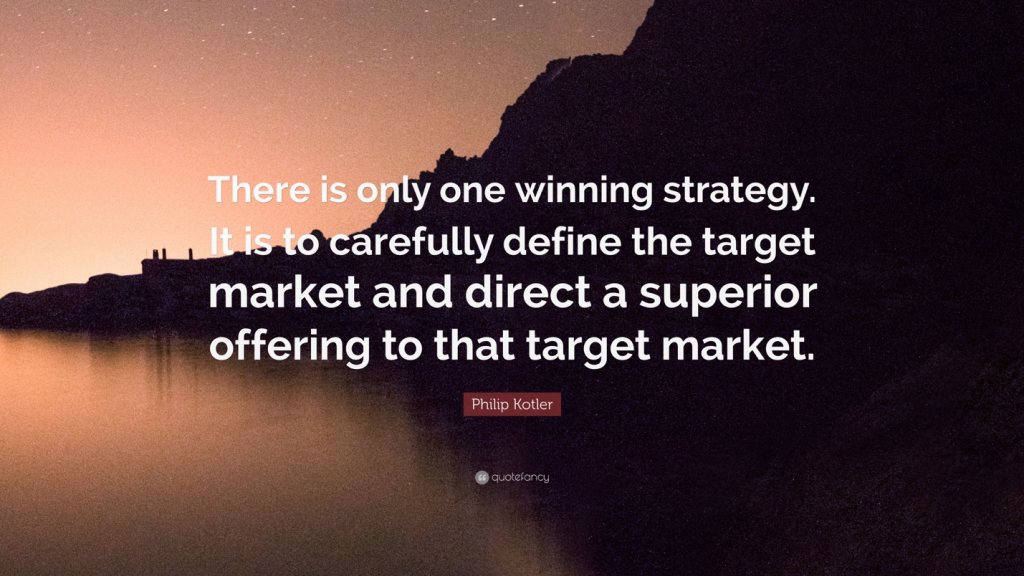
Let’s start by consulting the “father of marketing” or at least one of its most important contributors.
Figure 18 – Philip Kotler on importance of defining the target audience. Source:
https://quotefancy.com/quote/1556489/Philip-Kotler-There-is-only-one-winning-strategy-It-is-to-carefully-define-the-target
So what is he talking about and how is this relevant for an NGO?

Lets consult a relevant source again:
Clearly a target group is not a business exclusive thing. It is just a phrase used to identify a certain number of people similar enough to form a coherent group that we can communicate to and that we as an organization find important.

So don’t get scared of the target groups or any of its synonyms.
Regardless of the particular phrase used they all mean the same – this “coherent group that we can communicate to and that we as an organization find important” above mentioned.
The reason why this concept is so important is that identifying a target market helps your organization develop effective communication strategies.
So to repeat once again:
A target market is a set of individuals sharing similar needs or characteristics that your organization hopes to serve.
And the beauty of target marketing is in leveling out the big and the small, the ones who have resources and the ones who don’t.
Actually target market makes it easier for small companies to compete with large established companies, innovators to disrupt the market, and startups and other companies to get an advantage over their competitors. This too is relevant for NGOs.
LIMB – TARGET GROUPS – CHOOSING A TARGET GROUP
If you have ever or always dreamed about being a private investigator here is your chance!🕵️♂️
How to target?
Remember, your principal mission is to narrow your audience down to a recognizable segment that can be clearly defined through a set of characteristics.
So:
- Look at your current audiences/users/followers…
- Check out your “competition” – either in the same field of work or in another that share similar values. Maybe you will find you share a similar target group with H&M, Apple or IKEA?
- Analyze your service – what are it’s recognizable elements and how your audience uses them
- Choose specific demographics to target – age, location, gender, income, education, occupation, ethnic background…
- Dig into the psychographics of your target – Personality, Attitudes, Values, Interests/hobbies, Lifestyles, Behavior
And put in another way:
5 W’s of target audience selection
Who: Start with questioning yourself about who is going to buy / use your services and who’s support will you need. Are they children, teens, millennials, or baby boomers? Are they males or females? Where do they go, what do they do? Be flexible and consider what is important for your organization. Someone’s yearly income may be completely irrelevant for your cause but their choice of music may be crucial to your goal. #justsaying
What: What type of products and services do they use now and what do they expect from them? Does your service fits their requirements?
When: When do they use the service? Is it daily or rarely? In what occasion?
Where: Where do they live? Where do they use your service?
Why: Do they use it because it’s their need, or is it to prove a point, show off, or achieve some other psychological benefit?
